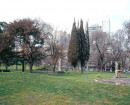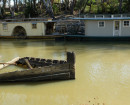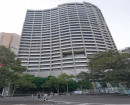LADY NORTHCOTE RECREATION CAMP
1273-1327 GLENMORE ROAD GLENMORE, MOORABOOL SHIRE
-
Add to tour
You must log in to do that.
-
Share
-
Shortlist place
You must log in to do that.
- Download report
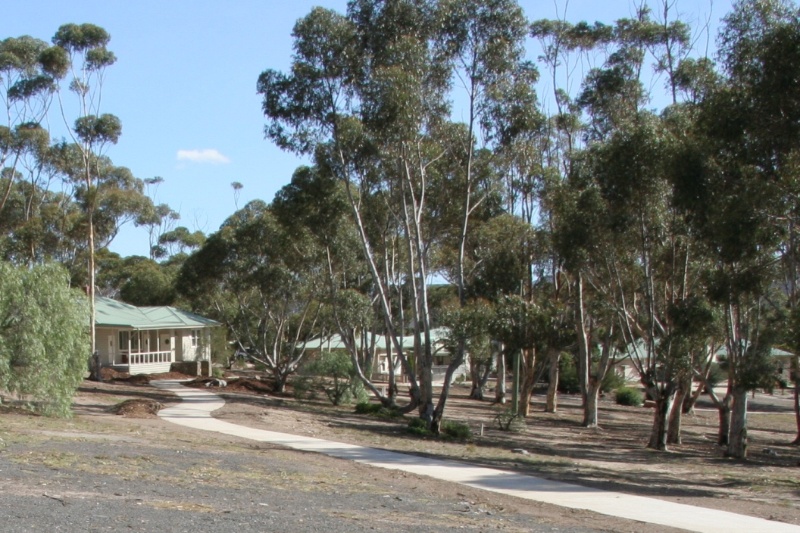

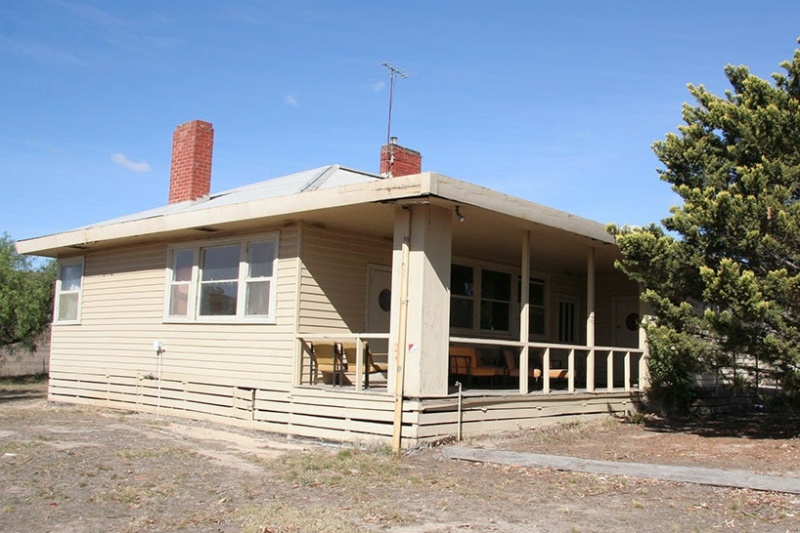
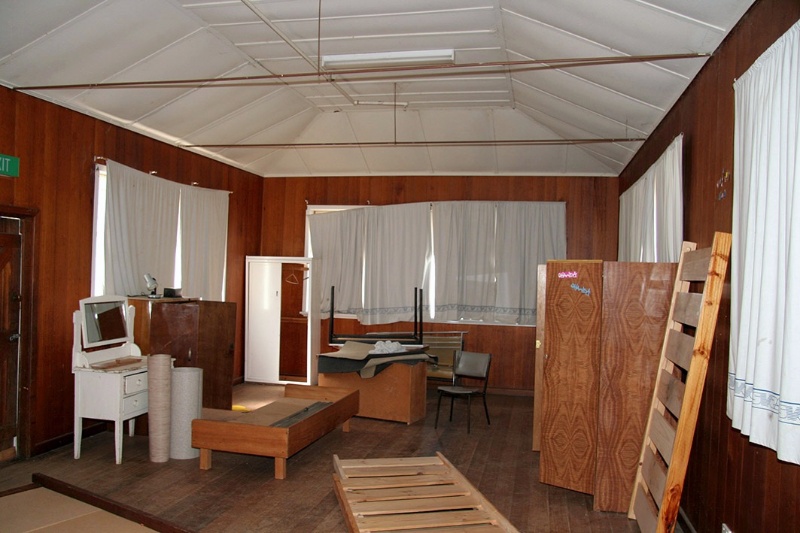
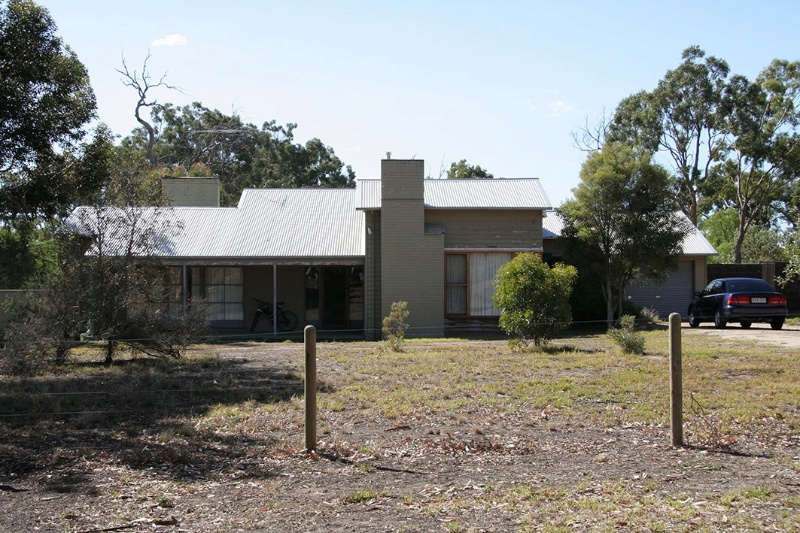
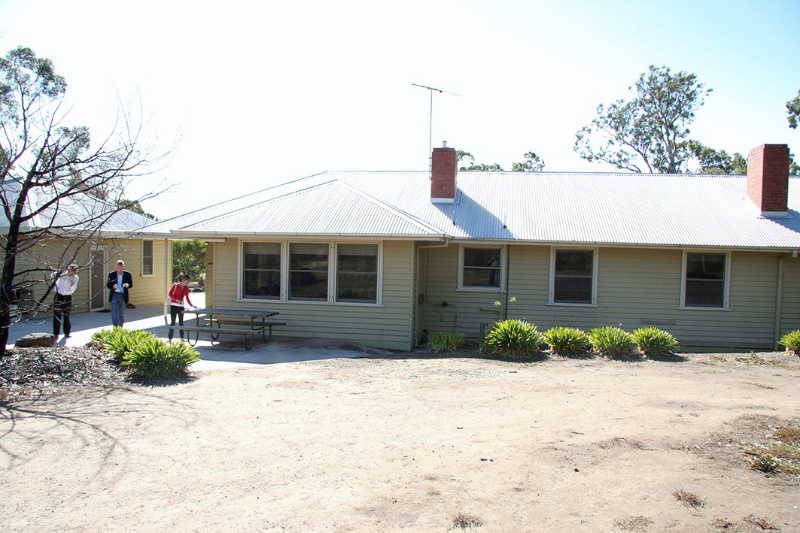
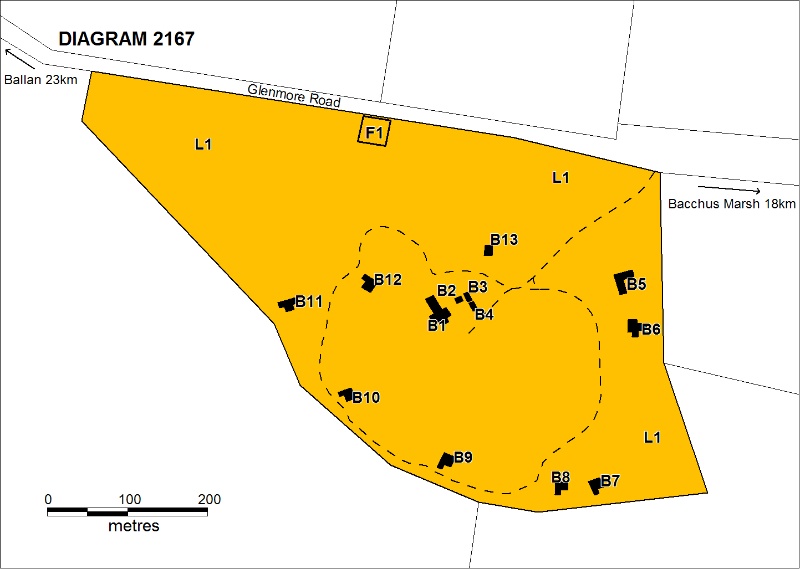









Statement of Significance
What is significant?
Lady Northcote Recreation Camp, formerly the Northcote Children's Farm, opened in 1937. A farm school based on the model conceived by Kingsley Fairbridge, it housed and educated underprivileged British children, who were sent out with the initial aim of training boys for farm work and girls for domestic service. At its peak, child migration from Britain to Australia had the support of both the British and Australian governments, charitable organisations and churches.
Lady Northcote, whose husband was the Governor-General between 1904 and 1908, was herself an orphan. A visit to the first Farm School in Pinjarra, Western Australia, left a strong impression on her, and after her death in 1934, a substantial portion of her estate was set aside to establish the 'Northcote Children's Emigration Fund for Australia'. In 1936, Sir William Angliss donated 2850 acres of the Glenmore Estate to the Northcote Trust. The architectural firm of Meldrum & Noad designed the village part of the Northcote Children's Farm, with accommodation arranged in an arc on the hill overlooking the communal dining hall block, a layout also adopted by the Fairbridge farm at Molong, New South Wales. Twelve identical cottages were constructed, along with a hospital, dining hall, store, tuckshop, principal's residence, staff quarters and a bluestone trickling filter sewerage system.
Due to the war, child migration was suspended between 1939 and 1948, and in view of the decline in arrivals, in 1944 all Northcote children, and a number of cottage mothers were sent to the Fairbridge Farm School at Molong. From 1948 until 1958, 17 more groups of children were brought to the Lady Northcote Children's Village. As child migrant numbers were in decline, 'One Parent' and 'Two Parent' schemes were adopted by Northcote in 1959. In 1960, an Act of Victorian Parliament allowed for wards of the State to be accepted at the village.
Enthusiasm for the child migration scheme waned after the war, as much to do with the outdated, gender-specific objectives of the farm school as the costs of operating them. In 1967, the last child migrants arrived in Australia, and in its last years the majority of children at Lady Northcote were state wards. The Fairbridge system folded in 1973, and in June 1976 the village section of the Northcote Children's Farm was donated to the Social Welfare Department, and the farm sold, with proceeds used to establish the Northcote Trust Fund. The property was transferred in 1978 to the Department of Sport and Recreation to be used as the Lady Northcote Recreation Camp. The YMCA currently leases the property from Sports and Recreation, continuing the usage of the site for youth programs. Former residents of the Children's Farm have formed the Old Northcotians' Association and continue to maintain a link with the place, having been given use of House 12.
How is it significant?
Lady Northcote Recreation Camp is of historical, architectural and social significance to the State of Victoria.
Why is it significant?
The Lady Northcote Recreation Camp is historically significant for its association with the Child Migration movement of the first half of the twentieth century. It is historically significant as the only Farm School established in Victoria based on the Fairbridge Farm School model and as the only institution in the State to have been constructed specifically to cater for child migrants.
The Lady Northcote Recreation Camp is architecturally significant as a cohesive collection of buildings designed as a Farm School. The original village layout, the remaining buildings five original cottages, the dining room complex, original cook's cottage, games room, principal's residence, staff quarters, the hospital and the sewerage system as well as the relationship between the buildings, demonstrate ideals of the Farm School and Child Migration Movement of the mid-twentieth century.
The Lady Northcote Recreation Camp is socially significant for its continued association with child and youth programs.
-
-
LADY NORTHCOTE RECREATION CAMP - History
HISTORY:
CONTEXTUAL HISTORY
The Farm School movement was instigated by Kingsley Fairbridge in the early part of the twentieth century. Upon visiting London in 1903, Fairbridge was troubled by the condition of Britain's poor children. Whilst a Rhodes Scholar in 1908, Fairbridge developed his concept of farm schools and child emigration and convinced fellow Rhodes Scholars to form a Child Emigration Society. Fairbridge was determined to see deprived children of Britain 'shedding the bondage of bitter circumstances and stretching their legs and minds amid the thousand interests of a farm' (Good British Stock: 3) The first Child Emigration Farm School at Pinjarra, Western Australia opened in 1912, moving to its present site in 1921. The first 35 children arrived in 1913, but war halted further emigration. A 1919 government subsidy restarted the program, and by 1924, 200 children were being educated at the school. . Fairbridge died in 1924, and the Child Emigration Society Farm School was renamed the Fairbridge Farm School in 1935. At this time there were two other Farm Schools in Rhodesia (Zimbabwe) and Canada, and a conference of the Fellowship of Rhodes Scholars decided that more Fairbridge farm schools should be opened in Australia. In 1937, two farm schools were opened in Glenmore, Victoria and in Molong, New South Wales.
Central to the Farm School ideology was the group home known as the 'cottage', each with its own garden, vegetable patch, and watched over by a cottage mother. The orphaned or underprivileged children came from organisations, institutions and private homes around Britain. They were educated at the local school until aged 14, followed by up to eighteen months training - boys for farm work, and girls for domestic work - and placement in a first job. A system of 'After Care' was developed to look after the children who had left the Farm School and were now employed or seeking employment. Officers would visit them around the state, and though ceasing to be the responsibility of Fairbridge once they turned 21, many former child migrants continued links with the farm school through the Old Fairbridgeans Association.
After World War II, though the Pinjarra and Molong schools received around a quarter of all child migrants, the farm school movement itself was in decline. Fairbridge management experimented with the 'One Parent' and 'Two Parent' schemes, to increase the number of eligible children. Under these schemes, underprivileged British children could be sent to a Fairbridge home, to be reunited with their parents, once they had settled in Australia. Small Fairbridge homes were also established in Tasmania at Tresca near Exeter and at Hagley near Launceston.
Despite the ideals held by the organisation, reality crept in. The Farm Schools were under great financial strain, and the farms were often unable to pay their own way. An investigation of child-migrant institutions in 1956 by the Commonwealth RelationsOffice(CRO) placed two Fairbridge farm schools, Pinjarra and Molong, on a list of establishments which it believed were 'not fit to receive more migrants', though the Lady Northcote farm 'passed muster' in the same investigation (David Hill: 277). The schools at Pinjarra and Molong continued to operate until the Fairbridge system ended in 1973, and since then, reports of mistreatment, abuse and lack of affection have emerged. The Fairbridge farm school sites are now used by charitable and youth organisations for recreation and youth training camps.
HISTORY OF PLACE
The Lady Northcote Farm School, also known as the Northcote Children's Village, or Northcote Farm School was established in 1937 with funds from the Lady Northcote Trust. Lady Northcote, whose husband was the Governor-General between 1904 and 1908, was herself an orphan. Upon a visit to Western Australia, she was impressed by the work of the first Fairbridge Farm School in Pinjarra, and left a substantial sum in her will to establish the Northcote Children's Emigration Fund for Australia. Though not officially affiliated with Fairbridge originally, the Lady Northcote farm school was founded on the principles of the Fairbridge system.
After considering other sites in Victoria, the Northcote Trustees were offered 2850 acres of the Glenmore Estate by Sir William Angliss, one of Australia's wealthiest philanthropists, in June 1936. It was reported in 1940, that a local movement had shown interest in the property as a migrant boys' training farm, in conjunction with the Big Brother movement in England, however insufficient funds caused this idea to be abandoned, and Angliss purchased the property in 1935. In April 1937, tenders were accepted for the construction of four cottages, a dining hall and kitchen block and a cook's cottage on the site. A pre-1939 plan by the architectural firm of Meldrum & Noad, shows an arc of cottages surrounding the dining hall and cook's cottage, a similar design to the Fairbridge farm at Molong, New South Wales. A swimming pool, gymnasium, chapel, dam and further cottages were noted for future construction. By 1939, the Northcote site could accommodate over 200 children.
The first arrival of child migrants was in July 1937, with a group of 28 boys from Britain, with further arrivals in May 1938, of 12 girls and 16 boys, and another group of 28 in July 1938. Colonel Heath, previously of the Fairbridge Farm School at Pinjarra, was appointed principal, who was reported to have run the farm like a military barracks (Sherington: 174).
The farm school children attended classes at the Glenmore State School with local children, and completed a number of chores on the farm each day. Sherington notes a daily routine including early morning cold showers, exercise, before lessons at the school and work on the farm in the afternoon. The Walkabout magazine reported also on the typical daily schedule of the inhabitants in 1940. The regular rising hour was 6 am, although a number of boys from each cottage would take turns rising an hour early to complete chores, such as milking cows, preparing food for animals, sweeping manager's quarters or embarking on a shooting expedition with the manager. The 7am breakfast included porridge, cocoa and tea, before an 8.15 parade and morning work until 11.30. The afternoon consisted of an hour's reading of fairytales or history or tales of adventure, another of letter-writing, before supper at 5pm, another parade and bedtime at 6.30 (Walkabout, 1 July 1940).
Lunch was eaten in the communal dining hall, whilst breakfast and supper were eaten in the smaller environment of the cottages. The cottage mothers, often known as 'mummy' or 'aunty', could be caring and beloved by those in their care, or remembered for humiliating or depriving their charges.
Child migration was suspended during 1939 and 1948, and in view of the decline in arrivals, in 1944 all Northcote children, and a number of cottage mothers were sent to the Fairbridge Farm School at Molong. Between 1948 and 1948, 17 more groups of children were brought to the Lady Northcote Children's Village. Colonel Heath had left his position as principal in 1942, amid accusations of misconduct and deteriorating relations with his staff. Vallency Kennedy Brown was appointed, and he set about suggesting changes to the school environment, including a less heavy-handed approach to discipline. In 1947, the Trustees rejected a plan for Northcote to become an official part of the Fairbridge Society in Australia, instead deciding to establish an organisation in Britain to select children, though the Fairbridge principles would still be followed (Sherington: 225). Fairbridge itself had changed from 'Fairbridge Farm Schools Incorporated' to 'Fairbridge Society Incorporated', and adopted a new framework reflecting a new ideology of care. In his editorial in the November 1949 edition of Northcotian, new principal M.O. Phillips, declared that 'Northcote has entered a new era - one of progress and change, of growing older and wiser', and with a second arrival earlier that year, numbers were up to 38, and most of the cottages now had electric hot water systems.
Enthusiasm for the child migration scheme waned after the war, as much to do with the outdated, gender-constrained aims of the farm school as the costs of the sites. It was noted that despite Government grants to supplement Northcote's income that 'an almost empty school costs just as much to run as one with its full complement of children' (Northcotian: Vol 3, No. 1, 1949). The 'One Parent' and 'Two Parent' schemes were also adopted by Northcote in 1959 and from the 1960s wards of the state were accepted.
The Fairbridge system folded in 1973, and in June 1976 the village section of the property was donated to the Social Welfare Department, and the farm was sold, with proceeds used to establish the Northcote Trust Fund (Bacchus Marsh Heritage Study). The property was transferred in 1978 to the Department of Sport and Recreation to be used as the Lady Northcote Recreation Camp. The YMCA currently leases the property from Sports and Recreation, meaning the site is continuing to be used for youth development.
REFERENCES:
Coldrey, Barry. Good British stock : child and youth migration to Australia. National Archives of Australia. 1999.Helen Lardner Conservation & Design. Lady Northcote Recreation Camp Heritage Assessment. 2002
Hill, David. Forgotten Children: Fairbridge Farm School and its betrayal of Australia's child migrants.2007
Peterson, Richard. Bacchus Marsh Heritage Study. 1995
Sherington, Geoffrey. Fairbridge: Empire and child migration. University of Western Australia. 1998.
The Hospital Magazine, December 1939
Walkabout, July 1 1940The Northcotian : magazine of the Old Northcotians' Association, Northcote Farm, Bacchus Marsh, Victoria. 1949-1951
LADY NORTHCOTE RECREATION CAMP - Plaque Citation
Lady Northcote Recreation Farm, Glenmore
The former Northcote Children's Farm was based on the Fairbridge model of child migrant welfare. Operating from 1937, it aimed to avoid an institutional approach through 'family' sized cottages and a rural setting.
LADY NORTHCOTE RECREATION CAMP - Permit Exemptions
General Exemptions:General exemptions apply to all places and objects included in the Victorian Heritage Register (VHR). General exemptions have been designed to allow everyday activities, maintenance and changes to your property, which don’t harm its cultural heritage significance, to proceed without the need to obtain approvals under the Heritage Act 2017.Places of worship: In some circumstances, you can alter a place of worship to accommodate religious practices without a permit, but you must notify the Executive Director of Heritage Victoria before you start the works or activities at least 20 business days before the works or activities are to commence.Subdivision/consolidation: Permit exemptions exist for some subdivisions and consolidations. If the subdivision or consolidation is in accordance with a planning permit granted under Part 4 of the Planning and Environment Act 1987 and the application for the planning permit was referred to the Executive Director of Heritage Victoria as a determining referral authority, a permit is not required.Specific exemptions may also apply to your registered place or object. If applicable, these are listed below. Specific exemptions are tailored to the conservation and management needs of an individual registered place or object and set out works and activities that are exempt from the requirements of a permit. Specific exemptions prevail if they conflict with general exemptions. Find out more about heritage permit exemptions here.Specific Exemptions:General Conditions: 1. All exempted alterations are to be planned and carried out in a manner which prevents damage to the fabric of the registered place or object. General Conditions: 2. Should it become apparent during further inspection or the carrying out of works that original or previously hidden or inaccessible details of the place or object are revealed which relate to the significance of the place or object, then the exemption covering such works shall cease and Heritage Victoria shall be notified as soon as possible. Note: All archaeological places have the potential to contain significant sub-surface artefacts and other remains. In most cases it will be necessary to obtain approval from the Executive Director, Heritage Victoria before the undertaking any works that have a significant sub-surface component. General Conditions: 3. If there is a conservation policy and plan endorsed by the Executive Director, all works shall be in accordance with it. Note: The existence of a Conservation Management Plan or a Heritage Action Plan endorsed by the Executive Director, Heritage Victoria provides guidance for the management of the heritage values associated with the site. It may not be necessary to obtain a heritage permit for certain works specified in the management plan. General Conditions: 4. Nothing in this determination prevents the Executive Director from amending or rescinding all or any of the permit exemptions. General Conditions: 5. Nothing in this determination exempts owners or their agents from the responsibility to seek relevant planning or building permits from the responsible authorities where applicable. Minor Works : Note: Any Minor Works that in the opinion of the Executive Director will not adversely affect the heritage significance of the place may be exempt from the permit requirements of the Heritage Act. A person proposing to undertake minor works may submit a proposal to the Executive Director. If the Executive Director is satisfied that the proposed works will not adversely affect the heritage values of the site, the applicant may be exempted from the requirement to obtain a heritage permit. If an applicant is uncertain whether a heritage permit is required, it is recommended that the permits co-ordinator be contacted.Interior:
Painting of previously painted walls and ceilings provided that preparation or painting does not remove evidence of any original paint or other decorative scheme.
Installation, removal or replacement of carpets and/or flexible floor coverings.
Installation, removal or replacement of hooks, nails and other devices for the hanging of mirrors, paintings and other wall mounted art or religious works or icons.
Installation, removal or replacement of electrical wiring.
Installation of new fire hydrant services including sprinklers, fire doors and elements affixed to plaster surfaces.
Landscape:
The process of gardening, including mowing, hedge clipping, bedding displays, removal of dead plants and replanting the same species or cultivar, disease and weed control, and maintenance to care for existing plants.Removal of dead or dangerous trees if the tree is an immediate risk to personal safety or damage to property.
Management of trees in accordance with Australian Standard; Pruning of amenity trees AS 4373.
Repairs, conservation and maintenance to roads, paths, edges, fences and gates, drainage and irrigation systems.
Non-commercial signage, lighting, security, fire safety and other safety requirements, provided no structural building occurs.
Removal of vegetation to maintain fire safety and to conserve significant buildings and structures
LADY NORTHCOTE RECREATION CAMP - Permit Exemption Policy
Permit Policy
The purpose of the permit exemptions is to allow works that do not impact on the heritage significance of the place to occur without the need for a permit. The cultural heritage significance of the Lady Northcote Recreation Camp is principally due to its association with child migration and the Farm School movement. The ideology of the Fairbridge Farm Schools is reflected in the arrangement of the buildings: the cottages in an arc around the communal facilities of the dining hall and kitchen block, the office and games room, and ancillary buildings consisting of the Manager's Residence, Angliss Lodge, the hospital, maintenance building and the bluestone sewerage system. This original layout and the relationship between the buildings is an important aspect of the significance of the place. Where original fabric remains it should be retained.
It is recommended that any proposed works be discussed with an officer of Heritage Victoria prior to a permit application. Discussing any proposed works will assist in answering any questions the owner may have and aid any decisions regarding works to the place. It is recommended that a Conservation Management Plan is undertaken to assist with the future management of the cultural significance of the place. If changes to the interiors are proposed any surviving original fabric should be retained where possible. All works to non-registered buildings and structures, including demolition and internal modification, within the extent of registration are permit exempt, but any additions would require permits. Permits would be required for any new buildings and structures on the registered land.
The extent of registration protects the whole site. All of the registered buildings are integral to the significance of the place and any external or internal alterations that impact on its significance are subject to permit application.
-
-
-
-
-
LADY NORTHCOTE RECREATION CAMP
 Victorian Heritage Register H2167
Victorian Heritage Register H2167 -
Lady Northcote Recreation Camp
 National Trust H2167
National Trust H2167
-
1 Fordham Court
 Yarra City
Yarra City -
10 Fordham Court
 Yarra City
Yarra City
-
-




